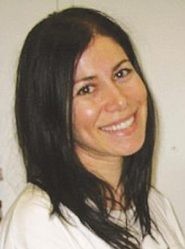Looking for the helpers
Bloodshed at Tree of Life. The painful irony.
This coming Shabbat, just before the Torah is returned to the ark, almost every Jewish congregation will sing the melodious “Eitz Chaim,” “Tree of Life.” It is the faces of the 11 congregants we shall think of, as the Torah is nestled in the Ark, who until last Shabbat were private individuals known only to family and friends. Gunned down in the midst of their Shabbat prayers — gunned down for being Jewish — it is they whom we shall think of.
These 11 souls have joined a long line of those who in our tradition are known as kedoshim, holy ones, people who are killed for no other reason other than being Jewish.
We’ve always told stories of these holy people, even entire communities of these holy people, in Mainz, Germany, in York, England, and, tragically, so many other places, even our one Jewish country, Israel.
But not in America. Somehow America was never part of that equation. Being killed for being Jewish? In America? Can’t be.
That time of innocence ended forever last Shabbat.
We are still within living memory of the Holocaust, yet a white supremacist killer shouts: “All Jews must die.” A blood-soaked siddur is not something we associate with American shuls.
Even so, part of me has always worried about such a scenario in my own shul.
We’ve all had the conversation around our Shabbat tables: concern for our safety, if and when to hire security guards, anxiety as talk of shul emergency drills became the norm. Especially in recent years, as there was a rise in anti-Semitism. Just three or four years ago, right here in Denver, an entire city block was defaced by swastikas and hateful rhetoric.
Anti-Semitism is as old as Judaism. It is, as Professor Deborah Lipstadt said, “the oldest hate in the world.”
One of the worshippers at Tree of Life, who survived the harrowing massacre, said: “I don’t know why he thinks the Jews are responsible for all the ills in the world, but he’s not the first and he won’t be the last. Unfortunately, that’s our burden to bear … It breaks my heart.”
Not only was this violent act of hate committed on the shores of America, but of all places, literally in Mr. Fred Rogers’s neighborhood. Not on his famous TV show, but in his real-life neighborhood of Squirrel Hill. Mr. Rogers, who used to say, “When I was a boy and I would see scary things in the news, my mother would say to me, ‘Look for the helpers. You will always find people who are helping.’”
And so it was this past week. In Mr Rogers’s neighborhood, all those “helpers” emerged, Jews and non-Jews alike. The Muslim student who lived nearby, walking among the wounded and shocked, offering home-cooked meals that he had been careful to keep kosher; his community, which within hours raised funds to help the congregation and offered to protect the synagogue with their own bodies this Shabbat; the outpouring of Christians and atheists. Neighbors who turned out in droves for a Havdalah service in the rain, thousands leaving a shattering Shabbos for the mundane week, together with their Jewish neighbors.
When I saw the ages of those murdered listed — the elderly of the synagogue — my mind went to my shul. I felt like I knew them: the ones who are always first to arrive, who you count on for a minyan, who are there to help everyone, who put community above all else.
The picture painted of David and Cecil Rosenthal, these two sweet souls known as gentle giants, who lived as brothers and then died as brothers — the vulnerability screamed off the page.
Eerily, or presciently, Tree of Life’s leader Jeffrey Myers posted this dvar Torah on the shul’s website the week prior to the deadly Shabbat:
“Many of us manage to find the time to attend a funeral, but do not possess the same fervor when it comes to a joyous event … we have a finite, limited amount of s’machot (the plural of simcha, a joyous milestone/occasion) in our lives … by not participating as fully as possible in s’machot we deprive ourselves of joy and the opportunity to celebrate with others … comforting a mourner is a mitzvah, and so is bringing joy to a newly married couple at their wedding.
“There is a story told in the Talmud of a wedding procession and a funeral procession heading along parallel roads, with the roads intersecting. The question asked is: when they meet at the fork, which procession goes first, funeral or wedding? The answer is wedding, as the joy of the couple takes precedence. In fact, the funeral procession is to move out of sight so that their joy is not lessened…”
May we sow the seeds of love and respect, of human dignity and compassion for the stranger in our midst; may we escort the Torah to its ark while singing “Eitz Chaim,” Tree of Life, without pain; may we plant and water seeds and trees that bring the joy of life’s milestones.
Yehi zichram baruch. May the memories of those who died be for a blessing.
Copyright Intermountain Jewish News

 39.0°,
Fair
39.0°,
Fair 




